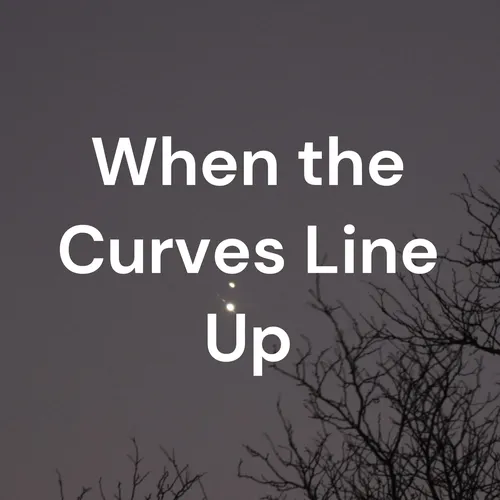
When the Curves Line Up
Watching the Sun, Moon and Planets
- Update frequency
- every day
- Average duration
- 4 minutes
- Episodes
- 1419
- Years Active
- 2021 - 2025

2024, January 19: Spot Planet Uranus near January Moon
January 19, 2024: After sunset, use a binocular to spot planet Uranus near the January Moon. Bright Jupiter is part of the scene. See the accompanying article - 2024, January 19: Spot Planet Uranus…

2024, January 17-18: Jupiter with January Moon
January 17-18, 2024: Bright Jupiter is with the January Moon. Jupiter, Saturn, and Moon are visible after sundown. See the accompanying article - 2024, January 17-18: Jupiter with January Moon

2024, January 16-19: Venus, Mercury at Minimum Separation
January 16-19, 2024: Brilliant Venus and Mercury are at minimum separation, the closest they appear for this apparition of both planets. See the accompanying article - 2024, January 16-19: Venus, M…

2024, January 15-21, Evening Moon Waxes Eastward
January 15-21, 2024: Look for the evening moon as it waxes eastward. The lunar orb is near Neptune, Jupiter, and Uranus. See the accompanying article - 2024, January 15-21, Evening Moon Waxes East…

2024, January 15: See Neptune Near Moon
January 15, 2024: See Neptune near the moon after sundown. Use a binocular to see it. See the accompanying article - 2024, January 15: See Neptune Near Moon

2024, January 14: Orion After Sunset
January 14, 2024: Look eastward for Orion after sunset. The Hunter rises into view during the night. See the accompanying article - 2024, January 14: Orion After Sunset

2024, January 13: Venus, Mercury in Celestial Footrace
January 13, 2024: Locate Venus and Mercury in a celestial footrace before sunrise. After sundown, the moon is near Capricornus’ tail. See the accompanying article - 2024, January 13: Venus, Mercur…

2024, January 12-14: Early Winter Evening Moon with Saturn
January 12-14, 2024: After sunset, the early winter evening moon is with Saturn in the southwest. See the accompanying article - 2024, January 12-14: Early Winter Evening Moon with Saturn

2024, January 12: Spot Mercury at Greatest Elongation near Venus
January 12, 2024: Before daybreak, spot Mercury at greatest elongation, to the lower left of Morning Star Venus. See the accompanying article - 2024, January 12: Spot Mercury at Greatest Elongatio…

2024, January 11: Morning Venus, Mercury Display
January 11, 2024: Look for the morning Venus, Mercury display in the southeast before sunrise. See the accompanying article - 2024, January 11: Morning Venus, Mercury Display

2024, January 10: A Four-Planet Parade
January 10, 2024: Mercury, Venus, Jupiter, and Saturn form a four-planet parade during the nighttime hours. See the accompanying article - 2024, January 10: A Four-Planet Parade

2024, January 9: Spot Mercury, Moon and Venus before Sunup
January 9, 2024: Before sunrise spot Mercury, Moon, and Venus in the southeastern sky. The Summer Triangle is in the east-northeast. See the accompanying article - 2024, January 9: Spot Mercury, Mo…

2024, January 8: Moon-Antares Occultation
January 8, 2024: This morning, a Moon-Antares occultation occurs in the southeastern sky. West Coast sky watchers have the best view.
See the accompanying article - 2024, January 8: Moon-Antares Occ…

2024, January 8: Rare Venus, Moon, Antares Gathering
January 8, 2024: Before sunrise see a rare Venus, Moon, Antares gathering in the southeast before sunrise. See the accompanying article - 2024, January 8: Rare Venus, Moon, Antares Gathering

2024, January 7: Venus-Antares Conjunction
January 7, 2024: Venus-Antares Conjunction. Venus passes the star Antares in a wide conjunction before sunrise in the southeast. See the accompanying article - 2024, January 7: Venus-Antares Conju…

2024, January 2: Earth is at Perihelion
January 2, 2024: Earth is at perihelion today – the point on the orbital path closest to the sun.
See the accompanying article - 2024, January 2: Earth is at Perihelion

2024, January 1-7: Dim Giant Planets in Evening Sky
January 1-7, 2024: Uranus and Neptune, dim giant planets, are visible in the evening sky through a binocular. See the accompanying article - 2024, January 1-7: Dim Giant Planets in Evening Sky

2024, January 1-7: Saturn in Southwest after Sundown
January 1-7, 2024: Saturn is in the southwest after sundown. Through a telescope the planet’s rings and moon Titan are visible. See the accompanying article - 2024, January 1-7: Saturn in Southwest …

2024, January 1-7: Bright Jupiter in Evening Sky
January 1-7, 2024: Bright Jupiter is visible in the southeast after nightfall. Find its moons through a binocular and Great Red Spot through a telescope. See the accompanying article - 2024, Janua…

2024, January 1-7: Venus, Mercury in Southeast Before Sunrise
January 1-7, 2024: During early January, the astronomy events include a dual appearance of Venus and Mercury in the southeast before sunrise. See the accompanying article - 2024, January 1-7: Venus,…